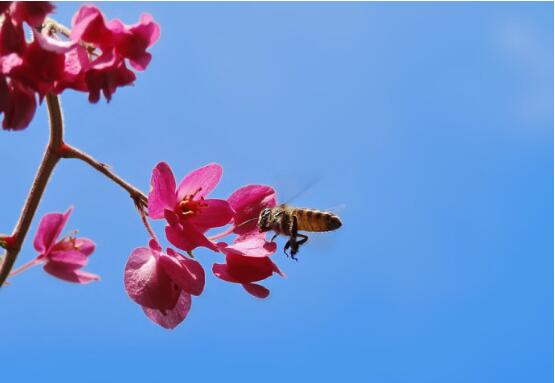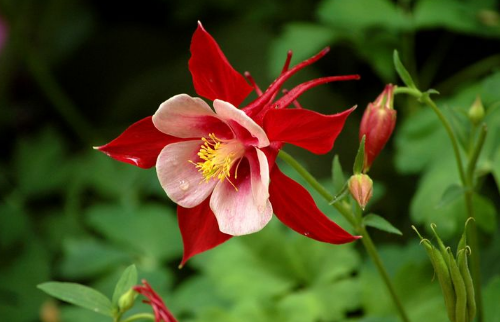Matters needing attention in the culture of Castanopsis thunbergii
Reproduction method
Propagation of Castanopsis thunbergii, generally using leaf cutting propagation, can also be cut propagation. Or take off the small bulbs on the plant, plant in time, you can also use a relatively simple sowing reproduction to sow seeds.

Diseases and insect pests
In the process of growing in spring and summer, Castanopsis thunbergii may encounter pests such as aphids, green insects and ground tigers, all of which may eat its leaves and need to be caught in time once found. Insecticides can also be used to kill insects if necessary.
Culture methods and matters needing attention of Castanopsis thunbergii
The cultivation method of Castanopsis thunbergii soil
Castanopsis thunbergii does not have high requirements for soil, you can use peat soil, perlite and river sand mixed soil, can also use water moss or pure peat soil.
Light and temperature
Maogao vegetables like the sun, sufficient light is conducive to bright colors, in the maintenance of Maogao vegetables, need to maintain a long time of light every day, placed on the balcony or windowsill. If there is no way to directly contact the direct light, it can also provide bright scattered light. Be aware that when the summer light is strong, shade is needed to avoid burns. Castanopsis thunbergii does not like too cold or overheated environment, the suitable temperature for growth is between 15 ℃-25 ℃, it needs to be kept warm in winter, the lowest temperature needs to be kept above 0 ℃, and indoor maintenance is necessary; in summer, too high temperature will enter dormancy.
Watering and fertilizing
Thatched vegetable can withstand moisture, but the requirement of air humidity is not high, but the humidity should not be too high in summer to avoid stem and leaf rot. Watering needs to keep the soil moist, generally can be used "waist water" method of water supply, watering the best soft water. Fertilization is to apply work fertilizer thinly, in the growing season, apply thin liquid fertilizer once or twice a month, pay attention to the concentration to avoid fertilizer damage.
Matters needing attention in the Culture of Castanopsis thunbergii
The propagation of Castanopsis carlesii can be cut, generally by the way of leaf cutting, or by taking off the small bulbs on the plant and planting in time, and it is also relatively simple to sow seeds by sowing and propagation.
Diseases and insect pests
In the course of its growth, it will encounter the harm of some pests in spring and summer, such as aphids, green insects and ground tigers, which may eat the leaves of the vegetable. Once found, they need to be caught and killed in time. Insecticides can be used if necessary.
How to raise Castanopsis thunbergii cultivation methods and matters needing attention
Although the name looks like the name of a vegetable, but in essence, it should be an ornamental plant. As for why it is called Maogao, the clever editor does not know, but will you know if it is smarter? The method of planting thatched vegetable and the nursing care of it are described in detail.
How to raise thatched vegetable
Castanopsis thunbergii is a plant that likes Shenzhen in relatively humid places, where it often grows by the water or moist meadows. The leaves are rich in color, with glandular hairs that secrete mucus on the surface of the leaves and white or red flowers.
Because these glandular hairs on the leaves can secrete mucus and look as if they are covered with dewdrops and are crystal clear. This mucus can stick insects like sticky paper and then digest and absorb them.
Culture methods and matters needing attention of Castanopsis thunbergii
1. Soil
Castanopsis thunbergii does not have high requirements for soil, you can use peat soil, perlite and river sand mixed soil, can also use water moss or pure peat soil.
2. Light and temperature
Maogao vegetables like the sun, sufficient light is conducive to bright colors, in the maintenance of Maogao vegetables, need to maintain a long time of light every day, placed on the balcony or windowsill. If there is no way to directly contact the direct light, it can also provide bright scattered light. Be aware that when the summer light is strong, shade is needed to avoid burns. Castanopsis thunbergii does not like too cold or overheated environment, the suitable temperature for growth is between 15 ℃-25 ℃, it needs to be kept warm in winter, the lowest temperature needs to be kept above 0 ℃, and indoor maintenance is necessary; in summer, too high temperature will enter dormancy.
3. Watering and fertilizing
Thatched vegetable can withstand moisture, but the requirement of air humidity is not high, but the humidity should not be too high in summer to avoid stem and leaf rot. Watering needs to keep the soil moist, generally can be used "waist water" method of water supply, watering the best soft water. Fertilization is to apply work fertilizer thinly, in the growing season, apply thin liquid fertilizer once or twice a month, pay attention to the concentration to avoid fertilizer damage.
4. Methods of reproduction
The propagation of Castanopsis carlesii can be cut, generally by the way of leaf cutting, or by taking off the small bulbs on the plant and planting in time, and it is also relatively simple to sow seeds by sowing and propagation.
5. Diseases and insect pests
In the course of its growth, it will encounter the harm of some pests in spring and summer, such as aphids, green insects and ground tigers, which may eat the leaves of the vegetable. Once found, they need to be caught and killed in time. Insecticides can be used if necessary.
Nursing of Castanopsis thunbergii after sowing
1. Spray water
Spray water on the vegetable with spray, be careful to spray, otherwise the seeds may be washed away. Then put the flowerpot on the inside of the sunlit windowsill. If you are growing in a basin, you need to cover the plastic at the top to keep the humidity. Pay attention to rehydration at all times.
2. Germination and emergence
Under excellent conditions, the vegetable can sprout in about 30 days and seedling in about 15 days.
3. Transplant
If the vegetable grows up and grows too dense, it can be transplanted with soil. Be careful not to hurt the root when transplanting.
4. Lighting
Most of the vegetables like the sun and are sun-resistant. They can be placed on a windowsill with plenty of light and can be exposed to the sun for more than four hours every day. If the northern territory receives all-day direct sunlight, the color of the vegetable will be very bright. Less than four hours of direct sunlight may lead to poor growth. It should be noted that do not let the vegetable can not receive direct sunlight for a long time, otherwise it will die. But if the plant is love thatch and fork thatch ointment, then pay attention to avoid direct sunlight, should be placed in a cool, weak place. Because they grow in woodland and the light is weak. Therefore, it is different from the maintenance method that requires direct sunlight in the Northern Territory.
5. Humidity
Mao paste vegetables do not have too many requirements for humidity, just keep it at 40% Murray 90%. But in the hot summer, the humidity can not be maintained at about 90%, otherwise the stems and leaves will rot. If there is stem and leaf rot, please ventilate in time.
Cuttage Propagation of Castanopsis thunbergii
As the vast majority of varieties of Castanopsis thunbergii can be used for leaf cutting, so the general choice of cutting propagation is to use leaf cuttage, of course, you can also choose a stronger stem for cutting. The specific method is to cut off the whole leaf, and then put the leaf flat or oblique in the soil, at this time to keep the soil moist and sufficient light, about a month, the cutting leaves will take root, at this time we can plant the rooting leaves.
It is said that the seeds of Castanopsis thunbergii are very small, so it is not advantageous to propagate by sowing, so we usually use cutting and transplanting when planting. As for the specific how to operate, focus on getting rich hot, it can help you reveal the answer!
- Prev

Matters needing attention in the culture of coral vines
Remember to keep the coral vine in the shade during the summer heat, but make sure you have three or four hours of direct sunlight every day. Only in this way will coral vines not grow in vines. If it is a family pot care, you need to put the flowerpot on the south or west balcony as far as possible.
- Next

The Culture method of Rabdosia angustifolia
Potted soil to choose potted Douzi, you need to choose a slightly larger flowerpot and put the soil in the flowerpot, which can be sandy soil with good drainage or humus-rich soil, and a little base fertilizer needs to be added to the soil. Light and temperature Douzi likes a cool growing environment and is very resistant to cold.
Related
- Fuxing push coffee new agricultural production and marketing class: lack of small-scale processing plants
- Jujube rice field leisure farm deep ploughing Yilan for five years to create a space for organic food and play
- Nongyu Farm-A trial of organic papaya for brave women with advanced technology
- Four points for attention in the prevention and control of diseases and insect pests of edible fungi
- How to add nutrient solution to Edible Fungi
- Is there any good way to control edible fungus mites?
- Open Inoculation Technology of Edible Fungi
- Is there any clever way to use fertilizer for edible fungus in winter?
- What agents are used to kill the pathogens of edible fungi in the mushroom shed?
- Rapid drying of Edible Fungi

